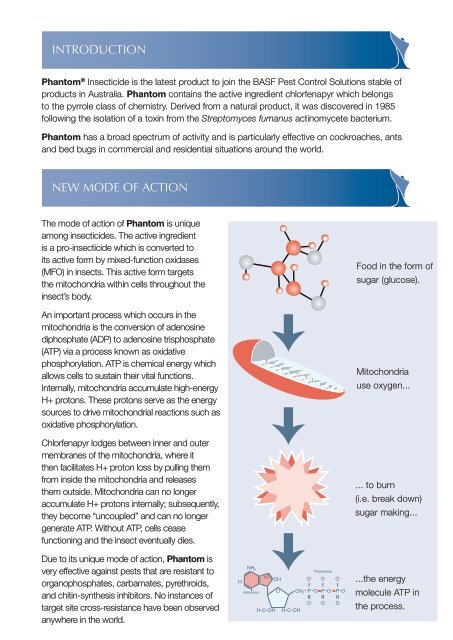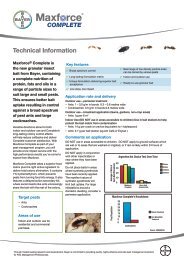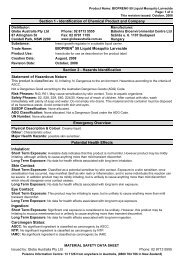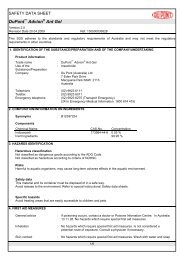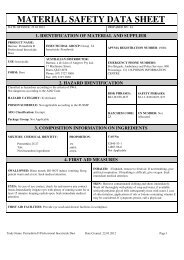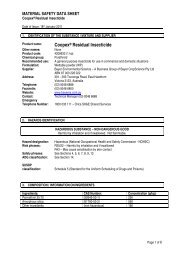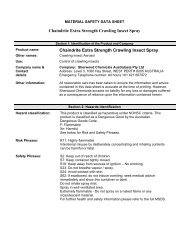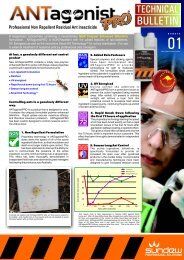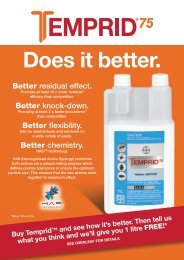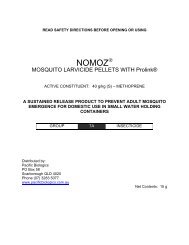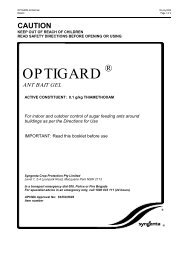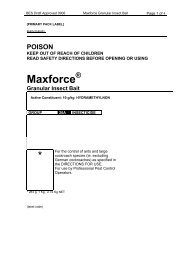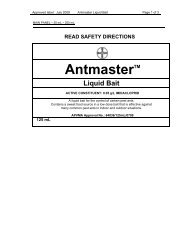Technical Manual - Globe Australia
Technical Manual - Globe Australia
Technical Manual - Globe Australia
You also want an ePaper? Increase the reach of your titles
YUMPU automatically turns print PDFs into web optimized ePapers that Google loves.
INTRODUCTION<br />
Phantom ® Insecticide is the latest product to join the BASF Pest Control Solutions stable of<br />
products in <strong>Australia</strong>. Phantom contains the active ingredient chlorfenapyr which belongs<br />
to the pyrrole class of chemistry. Derived from a natural product, it was discovered in 1985<br />
following the isolation of a toxin from the Streptomyces fumanus actinomycete bacterium.<br />
Phantom has a broad spectrum of activity and is particularly effective on cockroaches, ants<br />
and bed bugs in commercial and residential situations around the world.<br />
NEW MODE OF ACTION<br />
The mode of action of Phantom is unique<br />
among insecticides. The active ingredient<br />
is a pro-insecticide which is converted to<br />
its active form by mixed-function oxidases<br />
(MFO) in insects. This active form targets<br />
the mitochondria within cells throughout the<br />
insect’s body.<br />
An important process which occurs in the<br />
mitochondria is the conversion of adenosine<br />
diphosphate (ADP) to adenosine trisphosphate<br />
(ATP) via a process known as oxidative<br />
phosphorylation. ATP is chemical energy which<br />
allows cells to sustain their vital functions.<br />
Internally, mitochondria accumulate high-energy<br />
H+ protons. These protons serve as the energy<br />
sources to drive mitochondrial reactions such as<br />
oxidative phosphorylation.<br />
Chlorfenapyr lodges between inner and outer<br />
membranes of the mitochondria, where it<br />
then facilitates H+ proton loss by pulling them<br />
from inside the mitochondria and releases<br />
them outside. Mitochondria can no longer<br />
accumulate H+ protons internally; subsequently,<br />
they become “uncoupled” and can no longer<br />
generate ATP. Without ATP, cells cease<br />
functioning and the insect eventually dies.<br />
Due to its unique mode of action, Phantom is<br />
very effective against pests that are resistant to<br />
organophosphates, carbamates, pyrethroids,<br />
and chitin-synthesis inhibitors. No instances of<br />
target site cross-resistance have been observed<br />
anywhere in the world.<br />
Food in the form of<br />
sugar (glucose).<br />
Mitochondria<br />
use oxygen...<br />
... to burn<br />
(i.e. break down)<br />
sugar making...<br />
...the energy<br />
molecule ATP in<br />
the process.


